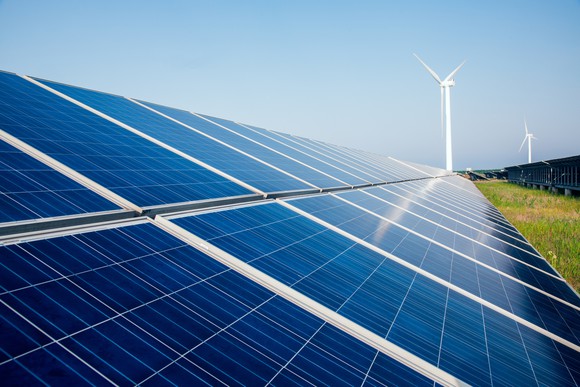Washington Post-Energy and Environment
We may have even less time to stop global warming than we thought
By Chris Mooney July 24, 2017

A world map shows climate anomalies during the 2015 World Climate Change Conference near Paris. (Stephane Mahe/Reuters)
At least since 2013, one of the biggest concerns in the climate change debate has been the so-called carbon budget — a fixed limit to the volume of carbon dioxide emissions that we can put into the atmosphere before irrevocably committing to a considerably hotter planet.
As of 2011, that budget was about 1,000 billion tons of carbon dioxide before the planet is likely to careen past a 2 degrees Celsius (3.6 degrees Fahrenheit) rise in temperatures, which is above what is believed to be the Earth’s temperature before industrialization. The budget shrinks by about 41 tons a year, more recently put at about 600 billion tons (or 15 years of emissions) by a group of scientists and climate policy wonks.
But now, a team of prominent climate scientists say the budget is probably even narrower. The problem is how you define “pre-industrial,” or when you consider human-caused perturbations of the atmosphere to have begun. Many analyses have taken the late 19th century as the starting point, but the new study in Nature Climate Change suggests significant human influence was afoot by at least 1750, and may have contributed as much as one-fifth of a degree Celsius of warming (0.36 degrees Fahrenheit) before the late 1800s.
“Frankly, this study does indicate that it may be more of an uphill battle than we previously thought in order to stabilize warming below the commonly defined dangerous limit of 2 degrees Celsius,” said Pennsylvania State University’s Michael Mann, one of the study’s authors. He completed the research with scientists from the universities of Edinburgh and Reading in the United Kingdom.
Defining what counts as “pre-industrial” can be a bit of a moving target in climate research, but when the United Nations’ Intergovernmental Panel on Climate Change outlined the carbon budget in 2013, the group said that it was analyzing warming that had occurred “since the period 1861—1880.” But if the world had already warmed by a few slivers of a degree before then, that shrinks the carbon budget by “as much as 40 % when earlier than nineteenth-century climates are considered as a baseline,” notes the new paper.
To be sure, carbon budgets are only estimates — a way of trying to quantify the likelihood or risk of crossing 2 degrees Celsius for a given amount of emissions. The safer you want to be, the tighter the budget becomes. But for all carbon budgets, if you’re two-tenths of a degree closer to the threshold than you thought, the risk of tipping over is certainly higher.
Mann said that between the start of the industrial revolution in England in the 18th century and the late 19th century — when reliable thermometer records begin (by which time that revolution had spread to other countries) — humans may have added 30 or 40 parts per million of carbon dioxide to the atmosphere.
But there’s a lot of uncertainty here. The scientists don’t know precisely how much the planet warmed between the true start of industrialization and the late 19th century, when it was really starting to hum. Temperature records get spottier the farther you go back, which is one key reason that the late 19th century has generally been considered as the temperature baseline. Influential temperature data sets, like NASA’s, begin in this period (NASA’s starts with the year 1880).
The new research considers a variety of possibilities for how much temperatures rose in the early industrial revolution, generally in the range of just a few hundredths of a degree Celsius to about two-tenths of one. One-tenth of a degree would also raise the risk of breaching 2 degrees C, but not by as much.
Naturally, taking fuller account of this pre-industrial warming also makes it much more likely that we’ll pass 1.5 degrees Celsius of warming. That’s an extremely challenging target for us to hit in limiting warming that many observers and analysts have already written off, although it is cited as a more lofty goal in the Paris climate agreement.
“It sort of takes 1.5 degrees Celsius off the table in the absence of active carbon removal,” said Mann, referring to possible technologies capable of actively withdrawing carbon dioxide from the atmosphere.
The analysis also greatly depends on how much humanity does or doesn’t change its behavior in coming years. If we keep emitting willy-nilly and follow what is often called a business-as-usual warming path, then a precise measurement of warming before the late 1800s won’t matter that much. We’ll blow past 1.5 and 2 degrees Celsius warming targets no matter what.
But if we’re actually beginning to curb emissions with the aim of hitting these goals — and there are some hints that we are — then a measurement of warming before the late 1800s really does matter. The risk of tipping over the line becomes greater — because you’re already closer to that line.
It is also important to bear in mind that the 2 degree Celsius target is a “normative goal, a value judgment,” said Reto Knutti, a climate expert with ETH Zurich who was familiar with the new study but did not contribute to it.
“There is no magic hard threshold that separates ‘safe’ from ‘dangerous.’ Not all impacts scale with temperatures, and what is dangerous to one person may seem okay to another,” Knutti said. “This is only partly the science issue of trying to quantify how warm the world was before humans started to substantially mess with the climate. It is just as much a political problem: If countries at some point are made responsible not just for their current but also for their past emissions (the polluter pays), then it matters when we start the historic blame game.”
Chris Mooney reports on science and the environment.





